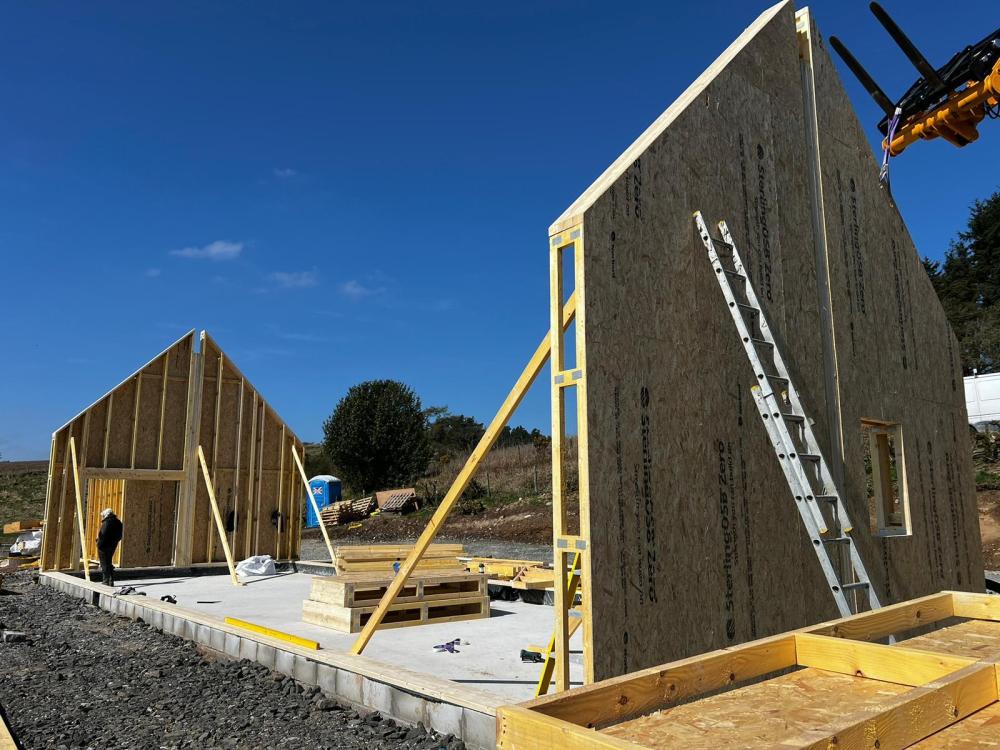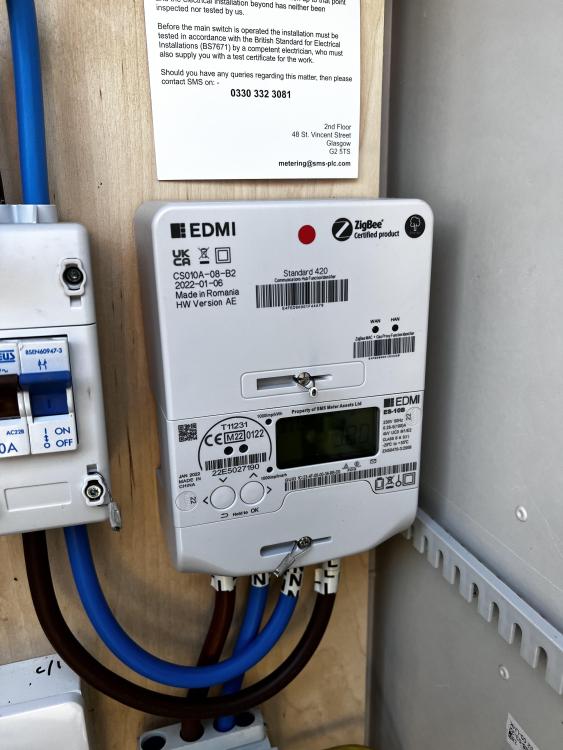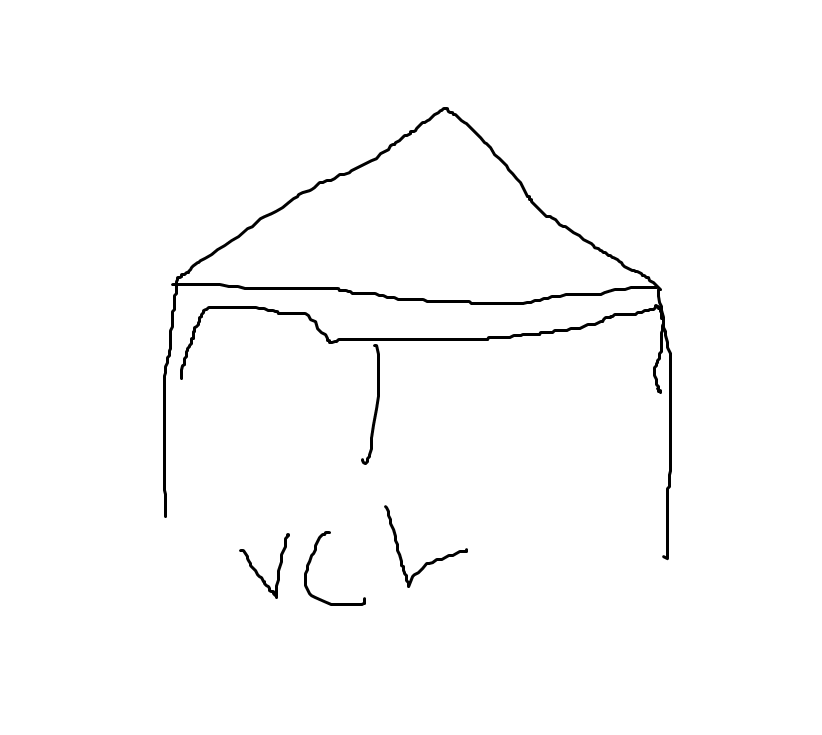Leaderboard
Popular Content
Showing content with the highest reputation on 04/18/23 in all areas
-
Welcome. Design the roof to give you the best PV production in winter. Then lots of insulation and airtightness tapes.2 points
-
Unfortunately companies go in to voluntarily Administration to right off debts More likely you will be at the back of a very long que2 points
-
Thanks you, truly appreciated. I in turn will endeavour to be less prickly (and more precise in my language)1 point
-
The unit marked man cave could be moved up a bit and the. Henley blocks ( top left item) could be moved underneath the man cave unit, freeing up the space above the existing meter for a larger meter if required. The blue and brown conductors going into the man cave unit require a second layer of insulation, or could be changed to suitably sized double insulated tails..1 point
-
The unit marked man cave needs to stay.1 point
-
I shall get the teapot ready.1 point
-
Ok. You'll need the right spark as theres a degree of live working!!1 point
-
We had a 6 yard skip from local waste operator for stripping old bungalow, lined with a https://www.123bigbags.com/uk/asbestos-bags/asbestos-removal-bags-355x170x115?channable=4060eb6964003538320e&gclid=EAIaIQobChMIhsTV5_uz_gIVpO_tCh191Q5eEAYYASABEgJzUfD_BwE and paid for weight and haulage! Good quality masks and PPE and hosepipe running continuously, think about 3 ton in total. Recall about £1200.1 point
-
Grey box top right is for joining thick black cable to the grey cable that goes into man cave main switch. That goes completely. Black box top left is the Henley block that moves to where the grey box was. That leaves lots of extra space above the existing meter for your new smart meter. If you need more space to the side you can move the man cave main switch to the right a bit but I dont think youd need to. Should all make sense to your spark??1 point
-
Some companies are great. I mentioned the problems with the garage install. Spoke to the owner today who will do whatever I need to get it to my satisfaction. I’m reluctant to have it taken apart to replace the damaged roof sheets in case they introduce more problems but more because I want to limit the number of people on-site. More people more vans greater likelihood of damage etc. He’s keen for it to be perfect but will offer a discount on the cost if I prefer. However, he’s going to supply a remote receiver and two remotes as recompense for the problems on top of whatever it takes to fix the garage.1 point
-
You’re probably right. The thing I’m happiest about is the door follows the pitch of the roof when open. They said they couldn’t do it but it’s a 30o pitch.1 point
-
It is teamwork, but you are the client. Make sure they realise this. If you don't quite get on at first, then that will likely continue. Don't be embarrassed at speaking to several, at least at first. Construction is confusing. It is one-off manufacture in a field. Then there are aesthetics and technical matters. Conversion is more difficult than nes build, so make sure your advisors are experienced in it1 point
-
Yes. Any water getting through the outer covering will reach the vcl and run down to the eaves, where the detailing should allow for it to drip outside, not into the cavity.1 point
-
Yes, sorry. I use the few holes they provide for initial fix, to clamp the timber > Sikaflex > metal sandwich together. Get things plumb, and then blast a few more in ( where they need pilot holes making ) for belt and braces.1 point
-
I think you need to outline exactly what you are hoping to achieve and what you've currently agreed regarding terms with your contractor/builder. Here's my very simplified view on this topic, and the replies on this thread. There are typically two types of routes the average self builder goes down: 1. Large, primary contractor 2. Smaller family/local builder I think there's a disparity of expectation here. The self builder will look to the large primary contractor because of the reduction in risk, capacity for dealing with problems, resource they might throw at it, dedicated project managers etc etc. But with that, likely, comes a higher cost. The smaller/family/local builder is probably the opposite of that, but obviously comes in at a reduced cost. What I would expect here, and what happens in most other industries, is that the supplier provides contractual terms and conditions. This is because they are the ones that deliver the service and therefore they need to formulate their capability to deliver, what their liability is, how their contract feeds into their indemnity insurances etc etc. I don't know of any industry where the customer brings/formulates a suggested contract/delivery terms to a supplier. Granted, there's always scope for negotiation and tweaking terms, but it's generally the supplier that provides their contract. I think the problem with some of the comments in this thread is that self builders are choosing the smaller/local/family builders, but then attempting to overlay onto them a set of (often) onerous contract terms. My point that I've referred to repeatedly, is that I don't believe this works. Even if this small builder agrees to your terms, the likelihood is your project/build is maybe only one or two that they have on the go. In the event that something disastrous happens and you come to attempt to rely on those terms, what's the likelihood of legal success? Will you have a day in court, or will your contractor likely fold and phoenix, as it's a much more cost effective route. Larger contractors that do have their terms (or adopt JCTs etc) will typically have a fairly hefty insurance policy/Professional Indemnity cover that backs their capability to defend any legal action you might take - and actually means that in the event that you're right, and they messed up, and you need compensating or making whole, their PI cover picks this up. Smaller builders just don't have this. It's why I said, earlier in the thread, that selecting a contract and enforcing it, or even proposing it on your smaller builder just doesn't make logical sense to me. With a larger contract, and a larger contractor, you don't need a huge amount of trust. You could even pay in advance knowing if you get shafted, you can sue and get your money back. With a smaller builder - get referrals, pay in arrears, built trust as you go, inspect often etc. TLDR: If your contractor doesn't already have a suggested contract/engagement/terms likelihood is they don't have an insurance policy that would back this up in the event you legally needed to refer to it.1 point
-
I'm probably not well placed to answer - I chose not to use any form of contract for our self build (with the exception of some T&C's for materials supply and one or two specialist contractors for specific jobs like insulation). I was happy with this at the time but I can easily see how it would not always be appropriate. JCT seems the most common option for self build from what I've read. In some ways NEC fits the bill for a contract that 'communicates expectations' - it was designed (and is used) as much as a project management tool as well as a contract (this is based on my experience of its use outside of self-build situations - commercial engineering). It's downsides are that it requires quite a a bit of time to 'manage' the contract which is probably where it varies from a lot of self build contracts that are written and then only ever used if there's a problem requiring the contract as a reference for what to do. This works OK on large-ish jobs where the contract management fee is proportionately small compared to the job. The second aspect is that both parties to the contract need a really good understanding of it and someone on each side who can administer it. If you're chosen contractor/builder has this skillset then it might be a goer, but as it's not a common form of self-build contract then this might be a struggle? That's probably not much help though, hopefully some more contractually-experienced self-builders will be along soon!1 point
-
1 point
-
Sand blinding and DPM are the wrong way around. You use the sand to protect the DPM from ripping against the stone.1 point
-
I always elongate the slots to leave both thread holes exposed. They’re both covered by any pan, regardless.1 point
-
Your Luxpowertek app says that your system is capable of discharging at up to 180amps = c. 9kW1 point
-
It’s my temporary supply for the build but it will become the permanent supply when we’re done hence it’s a proper kiosk.1 point
-
1 point
-
1 point
-
1 point
-
1 point
-
That’s an odd and naff detail to end up with an unbonded stack. No harm with what you have done and some flex is to be expected. You won’t be having an expansion joint in the render at that point so it should have been thought out better to start with.1 point
-
Jamie kept them on. Either train them or replace them. Two criteria when you employ someone. Capable of doing the job and willing to do the job.1 point
-
A few ideas to start with: 1 - You don't have to put anything there. You could just blank them off for possible future use and stick to other light sources - floor & desk lights, for example. 2 - You could loop a flex from them to a light suspended in a more convenient location nearby. As you've chosen Moroccan elsewhere, perhaps something like this one, to shed some interesting patterns Fretwork Moroccan styled pendant? 3 - For the home office (if it's only a home office), then you could indeed choose functional spotlights, either tracked or individual.1 point
-
Three nos They tend to be quite generic Bit of a tick list Ours mentions a gas boiler There’s no gas Structual engineers tend to be cheaper than using an Architect1 point
-
Feedback states some of them weren’t very good, which compounded Jamie’s problems1 point
-
About time. Self builders do this anyway. The mass market builders have been left for too long to "self police" and proven incapable or unwilling to do that, so they are now being forced to do things properly.1 point
-
out of curiosity. What is to prevent doing all the underpinning prior to implementing the planning permission, e.g. commencing building regs ? Wouldn't that be permitted development ? A farmer can concrete floors, build internal walls etc without needing planning afterall.1 point
-
On a positive note. Are you saying that there is a chipboard floor supported by a suspended concrete floor? Does that then have a void under it and air bricks in the wall? It might dry itself out.1 point
-
If this is a tiny company (rather than a larger one that the liquidator might try to find a buyer for) I suggest you simply agree with the liquidator that you will use your retention money to pay for someone else to do the snagging tasks. Theoretically the liquidator could decide to honour the contract - i.e. do the snagging and retrieve the retention, but I suggest the likelihood is low. Hopefully you get a response from the liquidator promptly.1 point
-
indirect LED strip lighting can be very beautiful and not too expensive if planned for appropriately. Essentially you create a ledge or recess using something like plasterboard, then plaster that and paint it the same as the adjacent wall. The LED strip is concealed in the recess so that you can’t see it directly. Instead you see the glow/reflection of the light as it bounces off the adjacent structures. It’s important you don’t skimp on the LED. Try ilumos, 2700k dimmable. You also need an aluminium profile for it. I will post some build ups later, so you can get more info.1 point
-
Double wrap it and take down the local council tip. Only conditions are 200gsm polythene sheeting and apply for your free asbestos disposal licence. When they opened up the skip so I could put mine in, there we're all sorts of split random rubble sacks of the stuff in there. So it was obvious some people don't take it seriously. I can take three loads in per month but they don't log your visits... fine by me.1 point
-
1 point
-
1 point
-
Hi, welcome. Also a long time lurker and first time poster, based in Warwickshire :)1 point
-
Architects and QS are quite expensive. Their standard contract can typically ask for as much as 11% of the build cost each if you hire them for the full duration of the project. If you can afford that then great. The Architect would visit the site regularly to check progress and manage the builder and look for defects etc. The QS would also visit a few times to value the work done and tell you if it's OK to pay the builder the next stage payment. Having a QS on board can help if you expect a lot of changes or the builder starts pressing you to pay more or in advance etc. It can be handy to be able to defer to your QS. However if you are good at managing people and negotiating then perhaps you only need an Architect and QS at the beginning? If unsure perhaps hire them in phases? If the report submitted for planning says underpinning isn't required I would start by finding an Architect to do construction drawings and get Building Control Approval to start. The Architect may require the services of an SE to check some things. Some Architects seem unable to do the calculations for steel beams for example. Be very clear on your budget. Its very easy for them to design things you can't afford to build. Depending on how that first phase goes you can decide if you want to pay for an Architect to be managing the build or just be available on an hourly basis. Do you even get on well? Start looking for builders. Any nice house you see being worked on stop and tell them you might need a builder and ask to look around. The more sites you can see the better. These unannounced visits are better than getting the builder to take you to see one finished- that one will be his mother's house 🙂 Look to see how tidy the site is. If the plumbing is in are the pipes neatly laid out or a mess? What are his views on the level of insulation required by the building regs? Does he see it as a pain to meet or an inadequate target? What does he do to ensure the house is air tight? Has he installed MVHR before?1 point
-
@puntloos The Aqua-lava one has a limescale filter that needs to be and replaced every year and I didn't like that. I've bought a Vitra V-Care Essential few month ago and very happy with it. The heated seat is a godsend in winter and it uses liquid limescale remover which I can pour into the system myself whenever necessary. I'll be getting another Japanese WC and is considering upgrading to Vitra Prime or Duravit one. Both looks neat. The Grohe Sensia does not have any heated toilet seat although it has a dryer. I would want to have a heated seat for that money. I have used many Japanese toilet when visiting overseas and most of the times the dryer function were slow and I am not sure if I have the patience if I'm not on on holiday mode, although the UK models may be different.1 point
-
Why do you say that? The house clearly has poor air quality, insufficient ventilation at the moment. So some improvement is necessary. Dehumidifiers will remove most of the excess moisture so will cure the most noticable issue, the condensation, at the expense of needing electricity to power them and generally being noisy irritating things. But that does not cure the poor air quality. for that you need proper ventilation. I keep seeing people recommend DMEV or PIV for this, but all that does is blow in fresh cold air or suck out stale air with the same amount of cold air being sucked in any way it can. Neither have heat recovery so while they will improve the air quality, they will cool the house / increase heating required. Yes for sure for best results you want an air tight house. But I don't understand the logic of saying mvhr is a waste of time if the house is not air tight. If you do fit mvhr to a leaky house, at least some of your ventilation will benefit from the heat recovery. Balance the system properly so you are not pressurising or depressurising the house and little else will enter or exit through all the leaks except perhaps on a windy day. I would certainly say if you get the chance go ahead with mvhr. Since I appear to be in the minority here, I await incoming.1 point
-
0 points
-
Ask @craig I quite fancy marketing double glazing and replacement windows. I have some bricks, can easily glue some business cards to them.0 points
-
You can't have sat in on a timekeeping disciplinary with some of the people I have had to work with. They all say they are willing.0 points
-
0 points
-
I was chatting to my groundswork guy today about this. He told about some guys building 6 houses in the town. The had one house worth of insulation that they fitted. BC came and checked it. They then took it out and put in the next house and boarded up the previous house. Only the last house was insulated.0 points
This leaderboard is set to London/GMT+01:00













